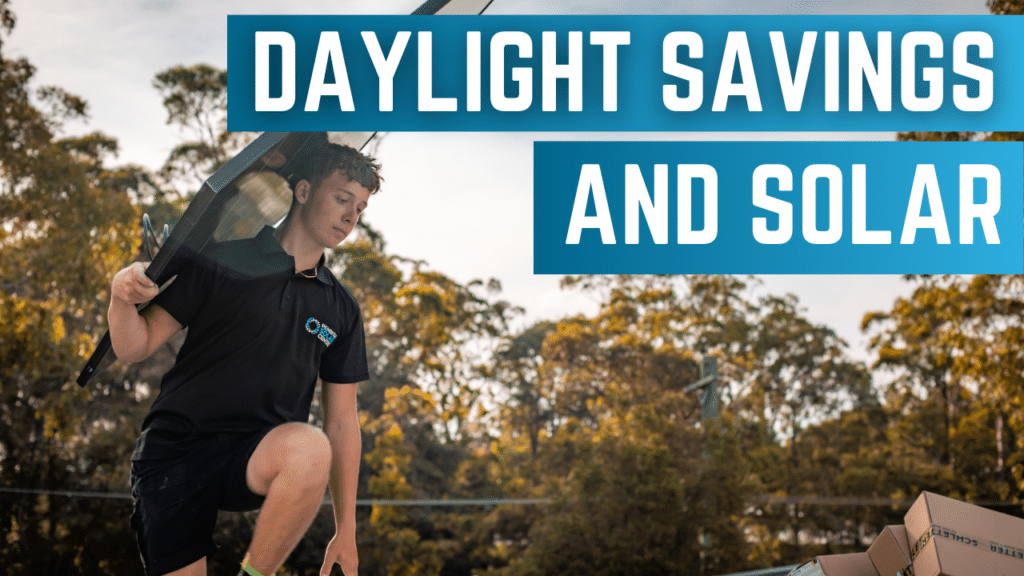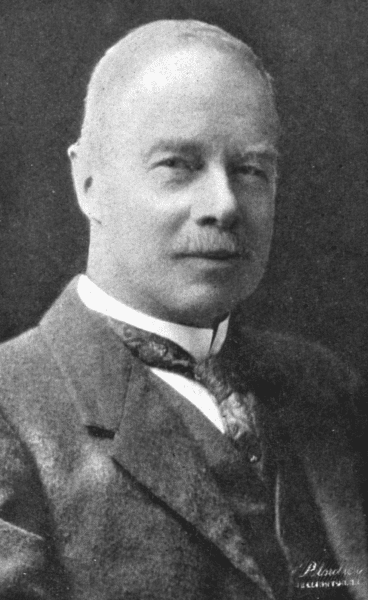
Next week, Australia’s five time zones will become three once again. Autumn has arrived and winter isn’t far behind.
What does this mean for your solar system and energy usage?
Daylight saving time affects solar usage and overall energy consumption. As we transition out of daylight saving, days become shorter, and we have fewer sunlight hours. Our solar panels receive less sunlight, leading to higher electricity bills in winter.
At Penrith Solar Centre, we install solar systems year-round (and have been doing it for years). We know how the season changes solar production, the solar industry, and the electrical grid. Setting your clock back an hour next week is a bigger shift to your solar production than the sun rising an hour earlier. Your usage will change but there are things you can do to save money this season beyond yelling at the kids to switch off the lights when they leave the room.
In this article, you will learn:
- Why Do We Do Daylight Saving Time?
- Does Daylight Saving Time Really Save Power?
- What Are Peak Sun Hours?
- How Can I Maximise Savings with Solar in the Winter?
By the end of this article, you’ll be ready to set your clock back and set your home up for savings.
Why Do We Do Daylight Saving Time?
It’s no secret that as you move towards Antarctica in the summer, the day extends well into the evening because it’s suddenly closer to the sun for a season.
In the 1890s, a New Zealander named George Hudson was the first to suggest shifting the clocks forward an hour to get more sunlight in the evening for cricket. While everyone was interested in more time for cricket, the concept didn’t really take off. One critic called it unscientific and impractical.

However, during the First World War, there were some German civil servants who saw using daylight saving time to save fuel. With more sunlight later into the evening, households didn’t have to use as much fuel. The world joined in with Germany and the Austro-Hungarian Empire (To be clear: the allied forces did keep shooting them, but they really liked the time change thing) until the end of the war. It disappeared until the beginning of the Second World War when it was implemented again to save fuel.
Australian states and territories have adopted it and experimented with it since 1971. It’s only been coordinated nationwide here since 2008.
If you’re interested in learning a bit more about making solar choices in alignment with the sun itself, you might want to check out the following article titled, How Much Solar Do You Need?
Does Daylight Saving Time Save Power?
Nope. Daylight saving time has no significant impact on overall electricity usage, as a nation. We use pretty much the same amount of energy in the summer as in the winter.
But when do we use it? That’s what changes.
A pair of American economists published an experiment that looked at the effects of daylight saving time during the 2000 Olympic Games in Sydney. The state governments extended daylight saving time from October to August to get more sunlight hours for the Olympic games. They discovered that demand increased in the morning.

If you’re interested in reading up on the experiment, you might want to check out the article they wrote titled, Daylight time and energy: Evidence from an Australian experiment.
In another experiment, they studied the effect of electricity demand during daylight saving time in Western Australia. They published their findings in a wonderful academic article titled, How does daylight saving time affect electricity demand? An answer using aggregate data from a natural experiment in Western Australia.
In winter, there was a large spike in the evening when folks were getting home from work or school. Spikes in the grid can cause blackouts, even though it might not happen every time. But during daylight saving time, that spike was spread out because folks were out enjoying the evening sunlight and getting home at different times to turn on all their lights. The impact on the grid was minimal.
As a species, humanity’s energy usage and goals have increased dramatically since the early 1900s. Any savings we experienced in days of yore are significantly cancelled out by air conditioning usage and weather patterns.

If you’re interested in learning more about how to evaluated your energy usage patterns to maximise your solar savings, you might want to check out the following article titled, What is Consumption Monitoring?
What Are Peak Sun Hours?
Peak sun hours are the time of day when your solar system is at its most efficient. It’s the time of day when the sun is as high in the sky as it’s going to get (its peak, if you will). It lasts about 3 – 5 hours during midday. Your solar panels are just not as efficient the rest of the day. Why is that?
Solar panels are tested and rated in ideal conditions. The light is fully shining on them directly at a perpendicular angle, a perfect 90°. Unfortunately, solar panels harvest sunshine in all kinds of conditions. When the sun is high in the sky above them, offering relatively even coverage across your roof, your solar panels output a lot of power.

Because the Earth is tilted, that means areas of Australia like Tasmania are further away from the sun in the wintertime. The days are shorter. The sun is lower in the northern sky too as it makes its way from east to west. The sun’s rays are hitting your panels at an angle, and the peak sun hours are just not as efficient in the winter.
A peak sun hour is 1000W per square meter of sunshine for 1 hour. We use this metric to calculate how much energy your solar system can produce. The equation is as follows:
Peak sun hours x solar system kilowatts = amount of kilowatt hours it can produce daily.

The amount of sunlight a home receives, along with the intensity of the sun’s rays (which varies as the sun shifts in the sky during the seasons), depends on the location of your home.
In Sydney, in the summertime, peak sun hours are 3.9 hours in the middle of the day. In the wintertime though, you might be lucky to get 2 – 2.5 peak sun hours.
If you’re interested in learning how the placement of your solar panels affects the efficiency of your solar system, you might want to check out the following article titled, Which Way Should Solar Panels Face in Australia?
How Can I Maximise Savings with Solar in the Winter?
During this time of year, it’s essential to conserve energy and consider shifting energy usage to daylight hours, especially for those without battery storage.
For example, turning off the pool pump during the day can help save energy. Just for 6 – 8 hours is enough to make a difference, especially since you’re not using it. You’re sure to come up with better cost-cutting alternatives than simply switching off lights when you’re not using them, but something as simple as that really does add up.
In the wintertime, you get a double whammy of sorts when it comes to energy bills: your last quarterly summer bill (with all that air conditioning usage on it) comes in and on top of that your solar isn’t helping as much as you’d like.
This is where battery storage for your solar comes into play. Self-consumption with a solar battery is really the only way to maximise your solar in the wintertime. We don’t have solar until 7:30 PM anymore. The sun effectively shuts off at 5 – 5:30 PM every day.
With battery storage, using energy at night is possible, but without it, you will have to import energy from the grid. And the cost of electricity is rising.
If you’re interested in learning a bit more about solar batteries, you might want to check out the following article titled, Adding a Battery to a Solar System.
They always say that daylight savings is such a great idea. I give it six months.
Love it or hate it, daylight saving time will affect your solar production every winter. And while that’s unfortunate, remember that your system will scream all summer long, more than making up for how little electricity you generated during the winter solstice.
Despite the shorter days, there’s another silver lining: cooler temperatures and longer nights make for better sleep. Enjoy your cozy nights and cups of tea. Summer will be with us again before you realise it.
At Penrith Solar Centre, we will talk you through all the variables your solar system will encounter with the seasons. We’re transparent about what your system will produce in the winter (and excited to brag about what your system will produce in the summer).

If you’re interested in learning more about how your solar system interacts with the sun and how the time of day can impact your system’s efficiency, you might want to check out the following article titled, What is Startup Voltage?










